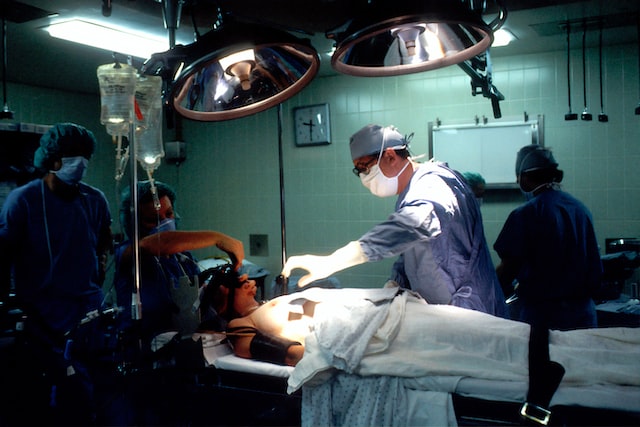A pilonidal cyst (pilonidal sinus) is a development of unnatural skin around the tailbone or at the tailbone that usually contains hair and skin. Ingrown hair that penetrates the skin is the main cause of this condition. Pain, fever, redness, drainage of fluids or blood from the pilonidal cyst, and bad smell from drainage fluid are the symptoms of pilonidal cyst. It mostly affects people who sweat a lot, who have excessive hair, and who sit for long periods. The pilonidal cyst requires treatment otherwise it can lead to sinus cavities and abscesses. Sometimes, it can even cause skin cancer called squamous cell carcinoma. Pilonidal cyst treatment includes antibiotic treatment, hot compresses, topical treatment, and surgical treatment.
Here are some of the steps you can follow to prevent pilonidal cyst:
- Avoid sitting for long hours
- Do not overweight
- Stop wearing tight-fitting clothes
- Keep your buttock clean and dry
- Shave your buttock if you have excess hair around it
- Avoid carrying or lifting heavy objects
Antibiotic treatment
Antibiotic drugs work the best in treating mild pilonidal cysts. It helps in preventing infection and also prevents further infection caused by pilonidal cysts. One must only use prescription antibiotic drugs because self-medication can further irritate the skin and may cause side effects. Here are some commonly used antibiotic drugs:
- Metronidazole: This antibiotic drug is used in clearing abscesses and also helps to reduce the growth of bacteria and protozoa in the cyst. It can be used orally or topically. It is sometimes given as an injection before the surgery.
- Erythromycin: This antibiotic drug is used to destroy bacteria and also helps to reduce the growth of bacteria. It can be taken orally or used topically or in intravenous form.
- Flucloxacillin: This antibiotic is a type of penicillin that removes certain infections caused by pilonidal cysts. Flucloxacillin may not be suitable for people with penicillin allergy.
- Clindamycin: This antibiotic is a type of lincomycin antibiotic. It helps to reduce the growth of bacteria and also helps to stop the bacteria from spreading. You can use it topically or take it orally. You can use Clindamycin if you have a penicillin allergy.
- Clarithromycin: This antibiotic also helps in reducing bacteria from spreading to a larger area.
The antibiotic drug may not work in treating severe pilonidal cysts as it does not heal the sinus tract. But may provide temporarily relieved. A pilonidal cyst can come back if you have multiple cysts
Hot compress
To completely get rid of a pilonidal cyst, you will require minor surgery. But you can still follow some methods at home to provide some relief from pain, irritation, and discomfort.
Applying a hot, wet compress to the infected area a couple of times a day can relieve pain, itching, and discomfort because the heat helps the pus to pull out which results in draining the cyst. You can also soak your buttock in warm water or a sitz bath.
Surgical treatment
Usually, pilonidal cyst surgical treatment is an in-office procedure. During the procedure, the surgeon will give you anesthesia to numb the area so that you do not feel any pain during the surgery. The surgeon takes a surgical knife to make a small cut to the cyst allowing the pus and fluid to drain.
After the surgeons have removed everything from the cyst, they may stitch the wound or may pack the wound with sterile gauze depending on the location of the cyst. Be sure to follow the wound care instruction well after the surgery to prevent infection and also to heal faster.
There is also a time when a pilonidal cyst can reappear at the same location even though you have recently drained the cyst. In this case, there is the requirement for an extensive surgical procedure to remove the entire cyst.
Here are some common questions about the pilonidal cyst.
Can I pop pilonidal cyst?
No, you cannot pop pilonidal cysts though they may look very similar to a pimple because squeezing the cyst does not help or fix the problem. Instead, they may develop the risk of infection or leave a scar.
How to sleep with a pilonidal cyst?
While sleeping makes sure to lie on your side but do not curl in a position that can stretch your lower back. You can also use an extra pillow around yourself to provide support and comfort which may also prevent you from rolling onto your back while you sleep.
How to clean pilonidal cyst?
Wash your infected area with warm, soapy water and dry it with a clean cloth. You can also try covering the area with a bandage if the infected area rubs against clothing. Be sure to change the bandage every day to prevent further infection.
Note: Avoid using a product that contains hydrogen peroxide or alcohol as it can slow the process of healing.
Can I walk after pilonidal surgery?
Usually, most people return to their daily work after resting for 2 to 4 weeks after the surgery. But, you should avoid heavy exercise or activities until you completely recover. A pilonidal cyst can reoccur when you don’t follow the advice of your doctor.
